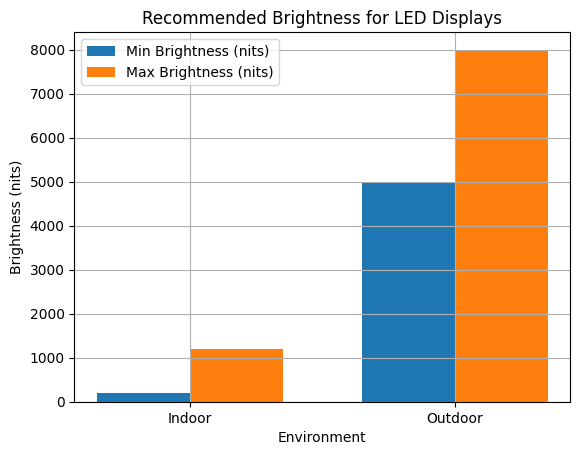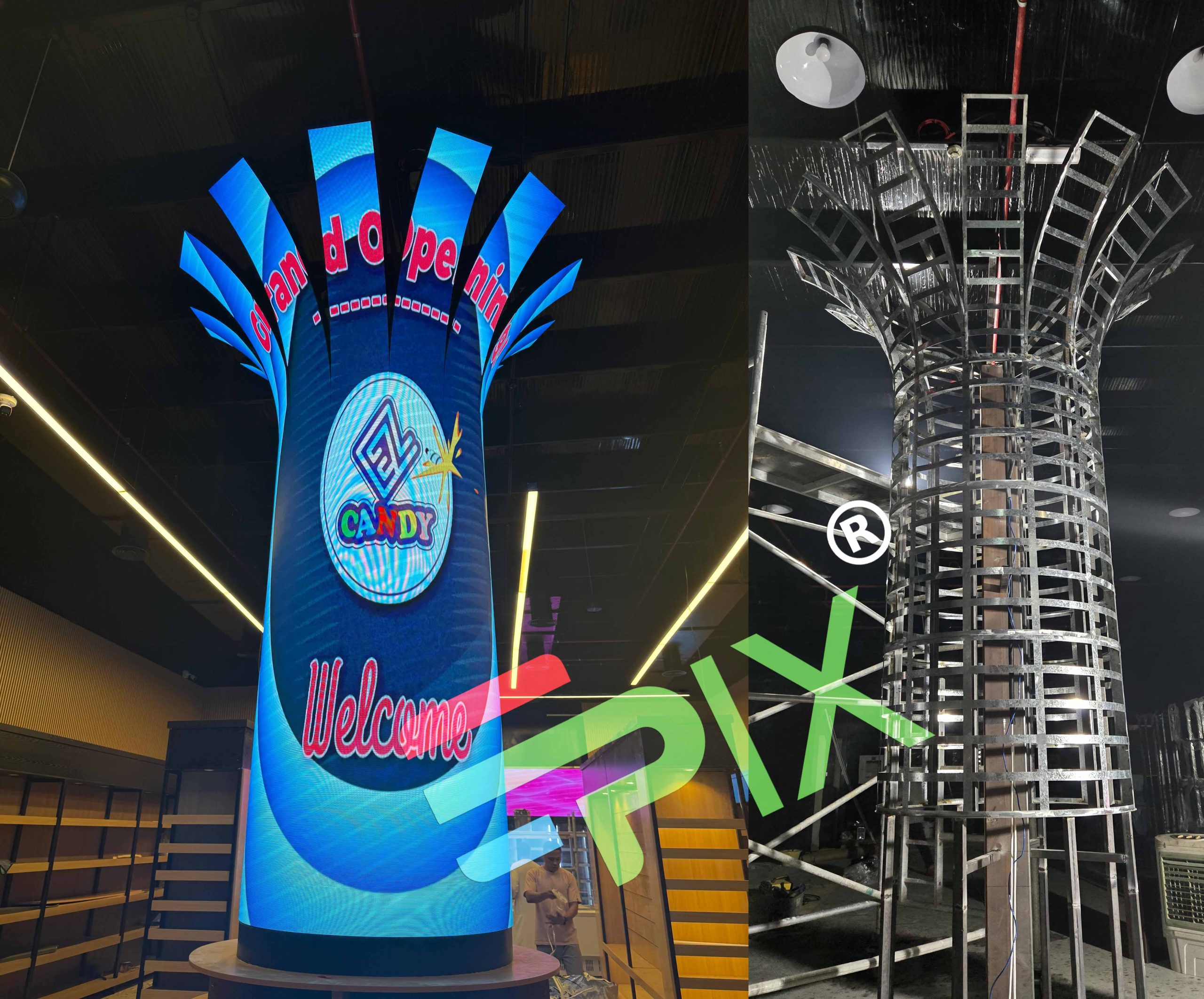Choosing Right LED Display Solution.
Summary
- Pixel Pitch & Viewing Distance
- Brightness & Environment
- Ingress Protection (IP) Rating
- Refresh Rate
- Colour Depth & Grayscale
- Serviceability & Maintenance
- Other Consideration
How to choose right LED Screen
Selecting the right LED display requires balancing technical specifications with real‑world considerations such as viewing distance, environment and maintenance. This guide covers the essential factors—including pixel pitch, brightness, ingress‑protection (IP) rating, refresh rate, colour depth and serviceability—so you can make an informed decision.
Pixel pitch and viewing distance
Pixel pitch is the distance between the centres of neighbouring LEDs. A small pixel pitch packs more LEDs into a given area and therefore increases the resolution, but it also raises cost and power consumption. Larger pixel pitches are cheaper and brighter but are best viewed from a distance. Pixel pitch directly affects visual acuity distance, which is the distance at which the eye can no longer resolve individual pixels. The 10× rule multiplies the pixel pitch by 10 to estimate the minimum viewing distance, while the Average Comfortable Viewing Distance (ACVD) multiplies pixel pitch by 30 and reflects the distance at which most people find the display acceptable. The following chart summarises ACVD values from industry viewing‑distance recommendations for common pixel pitches. As the pixel pitch increases, the comfortable viewing distance grows linearly.

LED screen brightness

Ingress‑protection (IP) ratings for LED screens
LED screen refresh rates
The refresh rate is the number of times per second (Hz) that the display refreshes its image. Higher refresh rates reduce flicker, produce smoother motion, and allow cameras to capture the screen without visible scan lines. Typical refresh‑rate tiers are:
1 920 Hz (standard) – Suitable for most outdoor advertising and large billboards where viewers are far away; this option is cost‑effective and provides smooth video for everyday content.
3 840 Hz (high refresh) – Preferred for indoor stages, conference rooms and small‑pitch displays where viewers are close and may record the screen with phones; it reduces image jitter and water‑ripple effects. This level is often required for pixel pitches under 2.5 mm or for 3D/naked‑eye LED billboards.
7 680 Hz (professional) – Used in XR stages, virtual‑production studios and high‑end broadcast where cameras track rapidly moving images; delivers the smoothest motion at a higher cost.
If budget permits, selecting 3 840 Hz provides a good balance of performance and cost, while 1 920 Hz remains adequate for long‑distance viewing and outdoor signage.
Colour depth and grayscale in LED displays
While pixel pitch determines spatial resolution, colour bit depth and grayscale govern tonal and colour fidelity. Grayscale defines the number of grey shades a display can render; 8‑bit grayscale produces 256 shades, 16‑bit produces 65 536 shades, enabling more detailed shadows and smoother gradients. Displays with higher grayscale bit depth show deeper blacks, brighter whites and smoother transitions, improving contrast and depth perception. Likewise, colour bit depth determines how many colours each pixel can display: 8‑bit colour yields roughly 16.7 million colours, 10‑bit colour over 1 billion, and 12‑bit colour more than 68 billion. High bit depths minimise banding and are essential for HDR, cinema and XR applications. For general signage, 8‑bit colour is sufficient, but premium installations should specify 10‑bit or higher.
Serviceability and maintenance of LED screens
Accessing the electronics of a large LED display is an important practical consideration. Front‑maintenance designs allow technicians to remove LED modules and perform tasks such as module replacement, brightness adjustment and cleaning from the front of the screen. This modular approach saves space—no rear access area is required—and makes routine maintenance quicker and more convenient. Front‑service cabinets are ideal for installations where the back of the screen is inaccessible (e.g., wall‑mounted displays in narrow corridors) or where appearance and space are at a premium.
Rear‑maintenance (post‑maintenance) screens are serviced from the back. They are often less expensive and easier to assemble for rental rigs or large outdoor billboards because technicians can access full cabinets and power supplies. However, they require sufficient clearance behind the screen and may limit placement options. Evaluate the site conditions to determine which maintenance style is more practical.
Other considerations when choosing an LED display
Viewing angle. Wide viewing angles ensure images remain bright and colour‑accurate when seen from the side. Specifications typically list horizontal and vertical viewing angles; choose panels with ≥160° horizontal and 140° vertical for most signage.
Power consumption and efficiency. Ask for average and maximum power‑consumption figures (in W/m²). Energy‑efficient driver chips and automatic brightness control reduce operating costs.
Reliability and lifespan. Reputable manufacturers rate their screens for 50 000–100 000 hours of operation. Look for robust aluminium or steel cabinets, conformal coating on circuit boards, redundant power supplies and well‑documented warranty terms.
Controller and integration. Ensure the LED processor supports the desired resolution, video inputs and control protocols (e.g., HDMI, SDI, IP streaming). For multi‑screen systems, choose a controller that can synchronise content and provide remote monitoring.
Conclusion
Choosing an LED screen involves more than picking a size. Pixel pitch dictates how close viewers can sit without seeing pixels; brightness must match the environment; ingress protection guards against weather; refresh rate affects motion quality and camera compatibility; colour depth ensures smooth gradients; and serviceability determines how easy the display is to maintain. By considering these factors and consulting with experienced suppliers, you can select an LED display that delivers vivid, reliable performance tailored to your audience and venue.

